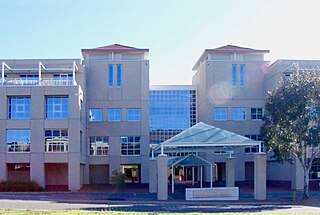
The Australian Secret Intelligence Service is the foreign intelligence agency of Australia, tasked with the covert collection of information overseas through personal contacts and other means of human intelligence. It is part of the Australian Intelligence Community and is also responsible for counter-intelligence and liaising with the intelligence agencies of other countries such as the NZSIS. ASIS was formed in 1952 but its existence remained secret within much of the government until 1972. ASIS is comparable to the American CIA and the British MI6.

The Defense Intelligence Agency (DIA) is an intelligence agency and combat support agency of the United States Department of Defense, specializing in defense and military intelligence.

Counterintelligence (counter-intelligence) or counterespionage (counter-espionage) is any activity aimed at protecting an agency's intelligence program from an opposition's intelligence service. It includes gathering information and conducting activities to prevent espionage, sabotage, assassinations or other intelligence activities conducted by, for, or on behalf of foreign powers, organizations or persons.

The Special Activities Center (SAC) is a division of the United States Central Intelligence Agency responsible for covert and paramilitary operations. The unit was named Special Activities Division (SAD) prior to 2015. Within SAC there are two separate groups: SAC/SOG for tactical paramilitary operations and SAC/PAG for covert political action.

The Bureau of Diplomatic Security, commonly known as Diplomatic Security (DS), is the security branch of the United States Department of State. It conducts international investigations, threat analysis, cyber security, counterterrorism, and protection of people, property, and information. Its mission is to provide a safe and secure environment for officials to execute the foreign policy of the United States.
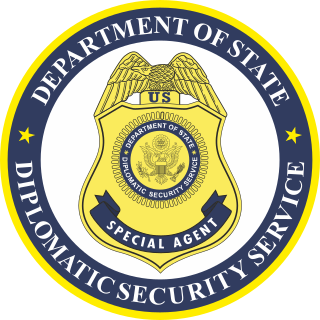
The Diplomatic Security Service (DSS) is the principal security and law enforcement agency of the United States Department of State (DOS). As the operational division of DOS' Bureau of Diplomatic Security, its primary mission is to provide security to protect diplomatic assets, personnel, and information, and combat visa and passport fraud. DSS also conducts counterterrorism, counterintelligence, cybersecurity and criminal investigations domestically and abroad.
Alliance Base was the cover name for a secret Western Counterterrorist Intelligence Center (CTIC) that existed between 2002 and 2009 in Paris. The existence of CTICs were first revealed by Dana Priest in a November 17, 2005 article in The Washington Post, while she referred to the Alliance Base in a July 2, 2005, article. The name was chosen in reference of Al Qaeda, which means "The Base" in Arabic. It was headed by a French General assigned to the Directorate-General for External Security (DGSE), and largely funded by the CIA's Counterterrorist Center. It hosted officers from Great Britain, France, Germany, Canada, Australia and the United States and was used for intelligence exchange and operational planning. Its existence was confirmed on 8 September 2006 by Christophe Chaboud, chief of the UCLAT, in an interview to RFI. Although intelligence exchange between intelligence agencies has become more and more widespread in the last decade, in particular following the September 11, 2001 attacks, this organisation also engaged in operations.

The Directorate of Operations (DO), less formally called the Clandestine Service, is a component of the US Central Intelligence Agency. It was known as the Directorate of Plans from 1951 to 1973; as the Directorate of Operations from 1973 to 2005; and as the National Clandestine Service (NCS) from 2005 to 2015.
A Counterterrorist Intelligence Center (CTIC) is, according to a The Washington Post November 18, 2005 front page article by Dana Priest, a counterterrorist operations center run jointly by the Central Intelligence Agency and foreign intelligence services as part of the US "War on Terror".

The Central Intelligence Agency, known informally as the Agency and historically as the Company, is a civilian foreign intelligence service of the federal government of the United States, officially tasked with gathering, processing, and analyzing national security information from around the world, primarily through the use of human intelligence (HUMINT) and conducting covert action through its Directorate of Operations. As a principal member of the United States Intelligence Community (IC), the CIA reports to the Director of National Intelligence and is primarily focused on providing intelligence for the President and Cabinet of the United States. Following the dissolution of the Office of Strategic Services (OSS) at the end of World War II, President Harry S. Truman created the Central Intelligence Group under the direction of a Director of Central Intelligence by presidential directive on January 22, 1946, and this group was transformed into the Central Intelligence Agency by implementation of the National Security Act of 1947.

The Abu Omar Case was the abduction and transfer to Egypt of the Imam of Milan Hassan Mustafa Osama Nasr, also known as Abu Omar. The case was picked by the international media as one of the better-documented cases of extraordinary rendition carried out in a joint operation by the United States' Central Intelligence Agency (CIA) and the Italian Military Intelligence and Security Service (SISMI) in the context of the global war on terrorism declared by the George W. Bush administration.
Clandestine HUMINT asset recruiting refers to the recruitment of human agents, commonly known as spies, who work for a foreign government, or within a host country's government or other target of intelligence interest for the gathering of human intelligence. The work of detecting and "doubling" spies who betray their oaths to work on behalf of a foreign intelligence agency is an important part of counterintelligence.
This is a list of activities carried out by the U.S. Central Intelligence Agency in Indonesia.
There is a long history of close cooperation between the United States and the United Kingdom intelligence services; see Clandestine HUMINT and Covert Action for World War II and subsequent relationships. There are permanent liaison officers of each country in major intelligence agencies of the other, such as the Central Intelligence Agency (CIA) and the Secret Intelligence Service ("MI6"), FBI and the Security Service (MI5), and National Security Agency (NSA) and Government Communications Headquarters (GCHQ). From 1943 to 2017, the Open Source Enterprise, a division of the CIA, was run out of Caversham Park in Reading, Berkshire. American officials worked closely with their British counterparts to monitor foreign TV and radio broadcasts, as well as online information.
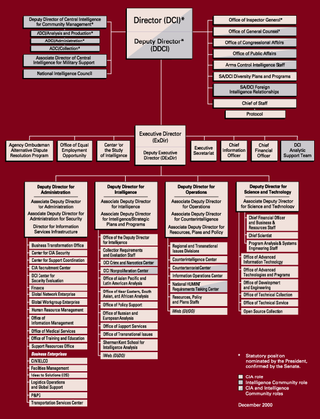
The CIA publishes organizational charts of its agency. Here are a few examples.
The Camp Chapman attack was a suicide attack by Humam Khalil Abu-Mulal al-Balawi against the Central Intelligence Agency facility inside Forward Operating Base Chapman on December 30, 2009. One of the main tasks of the CIA personnel stationed at the base was to provide intelligence supporting drone attacks in Pakistan. Seven American CIA officers and contractors, an officer of Jordan's intelligence service, and an Afghan working for the CIA were killed when al-Balawi detonated a bomb sewn into a vest he was wearing. Six other American CIA officers were wounded. The bombing was the most lethal attack against the CIA in more than 25 years.
The Boren-McCurdy intelligence reform proposals were two legislative proposals from Senator David Boren and Representative Dave McCurdy in 1992. Both pieces of legislation proposed the creation of a National Intelligence Director. Neither bill passed into law.

The Secret Intelligence Service (SIS), commonly known as MI6, is the foreign intelligence service of the United Kingdom, tasked mainly with the covert overseas collection and analysis of human intelligence on foreign nationals in support of its Five Eyes partners. SIS is one of the British intelligence agencies and the Chief of the Secret Intelligence Service ("C") is directly accountable to the Foreign Secretary.
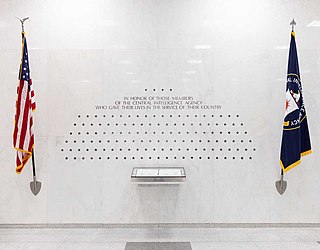
The United States Central Intelligence Agency (CIA) dates from September 18, 1947, when President Harry S. Truman signed the National Security Act of 1947 into law. A major impetus that has been cited over the years for the creation of the CIA was the unforeseen attack on Pearl Harbor, but whatever Pearl Harbor's role, at the close of World War II government circles identified a need for a group to coordinate government intelligence efforts, and the Federal Bureau of Investigation (FBI), the State Department, the War Department, and even the Post Office were all jockeying for that new power.
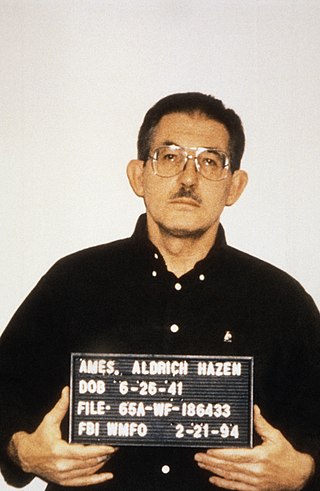
In 1995 it was revealed that the Central Intelligence Agency had delivered intelligence reports to the U.S. government between 1986 and 1994 which were based on agent reporting from confirmed or suspected Soviet operatives. From 1985 to his arrest in February 1994, CIA officer and KGB mole Aldrich Ames compromised Agency sources and operations in the Soviet Union and Eastern Europe, leading to the arrest of many CIA agents and the execution of at least ten of them. This allowed the KGB to replace the CIA agents with its own operatives or to force them to cooperate, and the double agents then funneled a mixture of disinformation and true material to U.S. intelligence. Although the CIA's Soviet-East European (SE) and Central Eurasian divisions knew or suspected the sources to be Soviet double agents, they nevertheless disseminated this "feed" material within the government. Some of these intelligence reports even reached Presidents Ronald Reagan and George H. W. Bush, as well as President-elect Bill Clinton.











